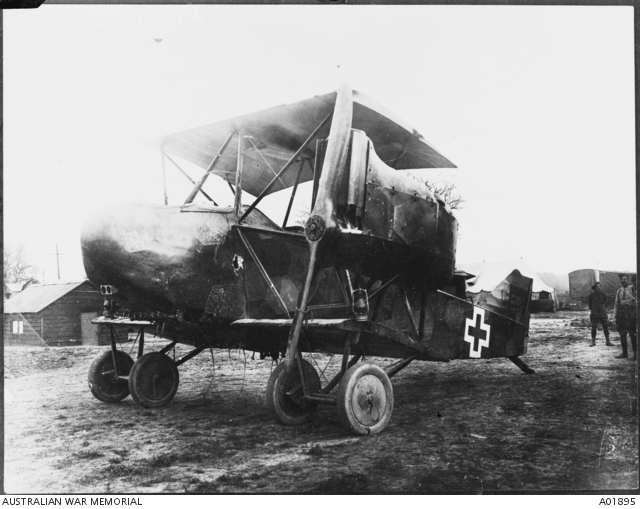| Places | |
|---|---|
| Accession Number | A01895 |
| Collection type | Photograph |
| Object type | Black & white - Glass original half plate negative |
| Maker |
Unknown |
| Place made | France: Picardie, Somme, Bray Proyart Area, Proyart |
| Date made | 1918 |
| Conflict |
First World War, 1914-1918 |
| Copyright |
Item copyright: Copyright expired - public domain
|
The remains of a German AEG IV bomber which was brought down in flames near Proyart. A close ...

The remains of a German AEG IV bomber which was brought down in flames near Proyart. A close look reveals two lanterns attached to left and right lower wing, suggesting that the bomber was recovered from elsewhere and towed by road to a safe area. Note the lozenge pattern camouflage applied to the fuselage; the bomb racks extending from the front of the nose to between the undercarriage; the shrapnel damage hole immediately below the forward central strut (this accords with reports of the plane being hit by AA fire); and the partial aircraft serial number evident on the lower wing strut. The soldier standing behind and to the right of the AEG is wearing a slouch hat, indicating this is an Australia base or depot - possibly even an airfield. The AEG's engines were mounted and supported on a series of metal struts which only attached to the lower wing and undercarriage supports - you'll note the left hand one is missing, probably due to AA damage or a heavy landing. The AEG mounted two 260 hp Mercedes D IVa 6 cylinder in lines. Also missing are both detachable swept-back outer wing panels. The combination of serial number, the date and the location suggest this is probably AEG G IV serial 588/17, which was hit by anti-aircraft fire and force landed in flames near Villers-Bretonneux on 16 May 1918. Villers-Bretonneux at the time was occupied by Australian troops, who had only captured the town two or three weeks before. The crew of three were probably taken captive if they weren't killed. After capture, this aircraft was assigned the British serial number G/5Bde/9, and would most probably have been shipped to the Agricultural Hall at Islington, UK, for evaluation, as most captured aircraft were. Most were scrapped by February 1919.
